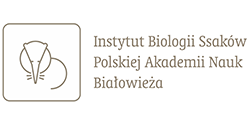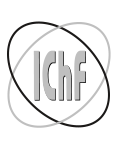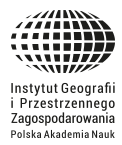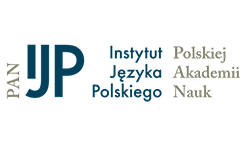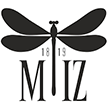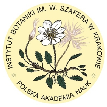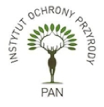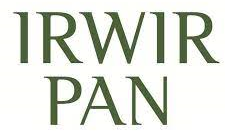- Search in all Repository
- Literature and maps
- Archeology
- Mills database
- Natural sciences
Advanced search
Advanced search
Advanced search
Advanced search
Advanced search

Object
Title: Long-term and seasonal variability of air masses temperature in Kraków (1961-2023)
Subtitle:
Geographia Polonica Vol. 98 No. 1 (2025)
Publisher:
Place of publishing:
Description:
Abstract:
This study attempted to determine temperature changes in southern Poland due to changes in the thermal characteristics of individual air masses. For this purpose, the daily air temperature values at the Kraków-Balice synoptic station were used, as well as the types of atmospheric circulation and air masses for southern Poland from the daily Calendar of Atmospheric Circulation Types for southern Poland. The study showed that the temperature increase of individual air masses was most significant in tropical air masses and was noticeable in both average and extreme daily temperature values. It was also found that the increase in temperature in particular air masses is associated with an increased number of warmer days, although not necessarily hot ones.
References:
Alekseev, G. W., Podgornyj, I. A., Swiaschchennikov, P. N. & Hrol, W. P. (1991). Osobennosti formirovanija klimata i ego izmennchivosti v poljarnoj klimaticheskoj sisteme atmosfera - morskoj led - okean. In B. A. Krutskich (Ed.), Klimaticheskij rezhim Arktiki na rubezhe XX i XXI v. (pp. 4-29). St. Petersburg: Gidromietieoizdat.
Bartoszek, K., & Kaszewski, B. M. (2022). Changes in the frequency and temperature of air masses over east-central Europe. International Journal of Climatology, 42(16), 8214-8231. https://doi.org/10.1002/joc.7704
![]()
Bartoszek, K., & Matuszko, D. (2021). The influence of atmospheric circulation over Central Europe on the long-term variability of sunshine duration and air temperature in Poland. Atmospheric Research, 251. https://doi.org/10.1016/j.atmosres.2020.105427
![]()
Bielec-Bąkowska, Z. (2014). Silne wyże nad Europą (1951-2010). Katowice: Wydawnictwo Uniwersytetu Śląskiego.
Bielec-Bąkowska, Z. (2022). Long-term changes in circulation conditions over southern Poland for the period 1874-2020. Miscellanea Geographica, 26(4), 237-248. https://doi.org/10.2478/mgrsd-2022-0010
![]()
Bielec-Bąkowska, Z., & Piotrowicz, K. (2021). Air pressure change. In M. Falarz (Ed.), Climate Change in Poland: Past, Present and Future (pp. 151-176). Cham, Switzerland: Springer. https://doi.org/10.1007/978-3-030-70328-8_7
![]()
Bielec-Bąkowska, Z., & Twardosz, R. (2023). Exceptionally cold and warm spring months in Kraków against the background of atmospheric circulation (1874-2022). Pure and Applied Geophysics, 180, 3351-3370. https://doi.org/10.1007/s00024-023-03324-9
![]()
Brunner, L., Hegerl, G., & Steiner, A. K. (2017). Connecting atmospheric blocking to European temperature extremes in spring. Journal of Climate, 30(2), 585-594. https://doi.org/10.1175/JCLI-D-16-0518.1
![]()
Cai, W., McPhaden, M. J., Grimm, A. M., Rodrigues, R. R., Taschetto, A. S., Garreaud, R. D., … & Vera, C.(2020). Climate impacts of the El Niño–southern oscillation on South America. Nature Reviews Earth& Environment, 1(4), 215-231. https://doi.org/10.1038/s43017-020-0040-3
![]()
Campbella, S., Remenyib, T. A., Whiteb, Ch. J. & Johnstona, F. H. (2018). Heatwave and health impact research: A global review. Health & Place, 53, 210-218. https://doi.org/10.1016/j.healthplace.2018.08.017
![]()
Cattiaux, J., Vautard, R. & Yiou, P. (2011). North-Atlantic SST amplified recent wintertime European land temperature extremes and trends, Climate Dynamics, 36, 2113-2128. https://doi.org/10.1007/s00382-010-0869-0
![]()
Dole, R., Hoerling, M., Perlwitz, J., Eischeid, J., Pegion, P., Zhang, T., Quan, X. W., Xu, T. & Murray, D. (2011). Was there a basis for anticipating the 2010 Russian heat wave? Geophysical Research Letters, 38(6). https://doi.org/10.1029/2010GL046582
![]()
Francis, J. A. & Vavrus, S. J. (2012). Evidence linking Arctic amplification to extreme weather in mid-lati-tudes. Geophysical Research Letters, 39(6). https://doi.org/10.1029/2012GL051000
![]()
Gössling, S., Neger, C., Steiger, R., & Bell, R. (2023). Weather, climate change, and transport: A review.Natural Hazards, 118, 1341-1360. https://doi.org/10.1007/s11069-023-06054-2
![]()
Herrera-Lormendez, P., Mastrantonas, N., Douville, H., Hoy, A., & Matschullat, J. (2022). Synoptic circulation changes over Central Europe from 1900 to 2100: Reanalyses and coupled model intercomparison Project phase 6. International Journal of Climatology, 42(7), 4062-4077. https://doi.org/10.1002/joc.7481
![]()
IPCC. (2021). Climate Change 2021: The Physical Science Basis. Contribution of Working Group I to the Sixth Assessment Report of the Intergovernmental Panel on Climate Change [V. Masson-Delmotte, P. Zhai, A. Pirani, S. L. Connors, C. Péan, S. Berger, N. Caud, Y. Chen, L. Goldfarb, M. I. Gomis, M. Huang, K. Leitzell, E. Lonnoy, J. B. R.Matthews, T. K. Maycock, T. Waterfield, O. Yelekçi, R. Yu, & B. Zhou (Eds.)]. Cambridge University Press, Cambridge, United Kingdom and New York, NY, USA. https://doi.org/10.1017/9781009157896
![]()
Kendall, M. G. (1975). Rank correlation methods (4th ed.). London: Charles Griffin.
Krauskopf, T., & Huth, R. (2020). Temperature trends in Europe: Comparison of different data sources. Theoretical and Applied Climatology, 139, 1305-1316. https://doi.org/10.1007/s00704-019-03038-w
![]()
Lee, C. C. (2020). Trends and variability in airmass frequencies: Indicators of a changing climate. Journal of Climate, 33(19), 8603-8617. https://doi.org/10.1175/jcli-d-20-0094.1
![]()
Mann, H. B. (1945). Non-parametric tests against trend. Econometrica, 13(3), 245-259. https://doi.org/10.2307/1907187
![]()
Marosz, M., Miętus, M., & Biernacik, D. (2023). Features of multiannual air temperature variability in Poland (1951-2021). Atmosphere, 14(2), 282. https://doi.org/10.3390/atmos14020282
![]()
Martyn, D. (1992). Climates of the world. Amsterdam: Elsevier.
Met Office. (2022). Unprecedented extreme heatwave, July 2022. Met Office National Climate Information Centre. https://www.metoffice.gov.uk/binaries/content/assets/metofficegovuk/pdf/weather/learn-about/uk-past-events/interesting/2022/2022_03_july_heatwave_v1.pdf
Niedźwiedź, T. (1981). Sytuacje synoptyczne i ich wpływ na zróżnicowanie przestrzenne wybranych elementów klimatu w dorzeczu górnej Wisły. Kraków: Uniwersytet Jagielloński
Niedźwiedź, T. (2024). Calendar of Atmospheric Circulation Types for Southern Poland. https://us.edu.pl/instytut/inoz/kalendarz-typow-cyrkulacji/.
Niedźwiedź, T., & Ustrnul, Z. (2021). Change of atmospheric circulation. In M. Falarz (Ed.), Climate Change in Poland: Past, Present and Future. Cham, Switzerland: Springer, pp. 123-150. https://doi.org/10.1007/978-3-030-70328-8_6
![]()
Peters, W., Bastos, A., Ciais, P., & Vermeulen, A. (2020). A historical, geographical and ecological perspective on the 2018 European summer drought. Philosophical Transactions of the Royal Society B, 375(1810). https://doi.org/10.1098/rstb.2019.0505
![]()
Petrou, I., Kassomenos, P., & Lee, C.,C. (2022). Trends in air mass frequencies across Europe. Theoretical and Applied Climatology, 148, 105-120. https://doi.org/10.1007/s00704-022-03921-z Pezza, A. B., Simmondsa, I., & Renwickb, J. A. (2007). Southern hemisphere cyclones and anticyclones: Recent trends and links with decadal variability in the Pacific Ocean. International Journal of Climatology, 27(11), 1403-1419. https://doi.org/10.1002/joc.1477
![]()
Pfahl, S. (2014). Characterising the relationship between weather extremes in Europe and synoptic circulation features, Natural Hazards and Earth System Sciences, 14, 1461-1475. https://doi.org/10.5194/nhess-14-1461-2014
![]()
Piotrowicz, K. & Ciaranek, D. (2020). A selection of weather type classification systems and examples of their application. Theoretical and Applied Climatology, 140, 719-730. https://doi.org/10.1007/s00704-020-03118-2
![]()
Schemm, S., Sprenger, M., Martius, O., Wernli, H. & Zimmer, M. (2017). Increase in the number of extremely strong fronts over Europe? A study based on ERA-Interim reanalysis (1979-2014), Geophysical Research Letters, 44, 553-561. https://doi.org/10.1002/2016GL071451
![]()
Screen, J. A. (2014). Arctic amplification decreases temperature variance in northern mid to high-latitudes. Nature Climate Change, 4, 577-582. https://doi.org/10.1038/nclimate2268
![]()
Serreze, M. & Barry, R. (2011). Processes and impacts of Arctic amplification: a research synthesis. Global Planet Change, 77(1-2), 85-96. https://doi.org/10.1016/j.gloplacha.2011.03.004
![]()
Serreze, M. C. & Francis, J. A. (2006). The Arctic amplification debate. Climatic Change, 76, 241-264. https://doi.org/10.1007/s10584-005-9017-y
![]()
Sinclair, V. A., Mikkola, J., Rantanen, M., & Räisänen, J. (2019). The summer 2018 heatwave in Finland. Weather, 74, 403-409. https://doi.org/10.1002/wea.3525
![]()
Skrzyńska, M., & Twardosz, R. (2023). Long-term changes in the frequency of exceptionally cold and warm months in Europe (1831-2020). International Journal of Climatology, 43, 2339-2351. https://doi.org/10.1002/joc.7978
![]()
Sykulski, P. & Bielec-Bąkowska, Z. (2017). Atmospheric fronts over Poland (2006-2015). Environmental & Socio-Economic Studies, 5(4), 29-39. https://doi.org/10.1515/environ-2017-0018
![]()
Trepińska, J. (Ed.). (1997). Wahania klimatu w Krakowie. Kraków: Instytut Geografii UJ.
Trigo, R. M., Osborn, T. J., & Corte-Real, J. M. (2002). The North Atlantic Oscillation influence on Europe: climate impacts and associated physical mechanisms. Climate Research, 20(1), 9-17. http://www.jstor.org/stable/24866789
![]()
Twardosz, R., & Bielec-Bąkowska, Z. (2022). Continental-scale monthly thermal anomalies in Europe during the years 1951-2018 and their occurrence in relation to atmospheric circulation. Geographia Polonica, 95(1), 97-116. https://doi.org/10.7163/GPol.0228
![]()
Twardosz, R., Walanus, A., & Guzik, I. (2021). Warming in Europe: recent trends in annual and seasonal temperatures. Pure and Applied Geophysics, 178, 4021-4032. https://doi.org/10.1007/s00024-021-02860-6
![]()
Ustrnul, Z., Wypych, A. & Czekierda, D. (2021). Air temperature change. In M. Falarz (Ed.), Climate Change in Poland: Past, Present and Future. Cham, Switzerland: Springer, pp. 275-330. https://doi.org/10.1007/978-3-030-70328-8_11
![]()
Więcław, M. (2010). Przestrzenne i sezonowe zróżnicowanie częstości występowania mas powietrza w Europie Środkowej w latach 1996-2005. In L. Kolendowicz (Ed.), Klimat Polski na tle klimatu Europy: Warunki cyrkulacyjne i radiacyjne (pp. 9-21). Poznań: Bogucki Wydawnictwo Naukowe.
WMO. (2022). State of the Climate in Europe 2021 (WMO-No. 1304). WMO: Geneva, Switzerland. https://digitallibrary.un.org/record/3994378?v=pdf
Zarrin, A., Ghaemi, H., Azadic, M., & Farajzadeh, M. (2010). The spatial pattern of summertime subtropi cal anticyclones over Asia and Africa: A climatological review. International Journal of Climatology, 30, 159-173. https://doi.org/10.1002/joc.1879
![]()
Zuo, J., Ren, H. & Li, W. (2015). Contrasting impacts of the Arctic oscillation on surface air temperature anomalies in Southern China between early and middle-to-late winter. Journal of Climate, 28(10), 4015-4026. https://doi.org/10.1175/JCLI-D-14-00687.1
![]()
Zvyagintsev, A. M., Blum, O. B., Glazkova, A. A., Kotelnikov, S. N., Kuznetsova, I. N., Lapchenko, V. A., … & Popikov, A. P. (2011). Air pollution over European Russia and Ukraine under the hot summer conditions of 2010. Izvestiya, Atmospheric and Oceanic Physics, 47(6), 699-707. https://doi.org/10.1134/S0001433811060168
![]()
Relation:
Volume:
Issue:
Start page:
End page:
Detailed Resource Type:
Resource Identifier:
oai:rcin.org.pl:244714 ; 0016-7282 (print) ; 2300-7362 (online) ; 0.7163/GPol.0292
Source:
CBGiOS. IGiPZ PAN, call nos.: Cz.2085, Cz.2173, Cz.2406 ; click here to follow the link
Language:
Language of abstract:
Rights:
Creative Commons Attribution BY 4.0 license
Terms of use:
Copyright-protected material. [CC BY 4.0] May be used within the scope specified in Creative Commons Attribution BY 4.0 license, full text available at: ; -
Digitizing institution:
Institute of Geography and Spatial Organization of the Polish Academy of Sciences
Original in:
Projects co-financed by:
European Union. European Regional Development Fund ; Programme Innovative Economy, 2010-2014, Priority Axis 2. R&D infrastructure
Access:
Object collections:
- Digital Repository of Scientific Institutes > Partners' collections > Institute of Geography and Spatial Organization PAS (IGiPZ PAN) > Publications of IGiPZ PAN and employees
- Digital Repository of Scientific Institutes > Partners' collections > Institute of Geography and Spatial Organization PAS (IGiPZ PAN) > Library > Series/Journals/Periodics
- Digital Repository of Scientific Institutes > Literature > Journals/Articles
Last modified:
Apr 2, 2025
In our library since:
Apr 2, 2025
Number of object content downloads / hits:
15
All available object's versions:
https://rcin.org.pl./publication/281477
Show description in RDF format:
Show description in RDFa format:
Show description in OAI-PMH format:
| Edition name | Date |
|---|---|
| Bielec-Bąkowska Z. : Long-term and seasonal variability of air masses temperature in Kraków (1961-2023) | Apr 2, 2025 |
Objects Similar
Szafrańska, Ewa
Śleszyński, Przemysław
Kawecka-Endrukajtis, Barbara Tuszyńska-Rękawek, Halina Sielużycka, Jadwiga

 INSTYTUT ARCHEOLOGII I ETNOLOGII POLSKIEJ AKADEMII NAUK
INSTYTUT ARCHEOLOGII I ETNOLOGII POLSKIEJ AKADEMII NAUK
 INSTYTUT BADAŃ LITERACKICH POLSKIEJ AKADEMII NAUK
INSTYTUT BADAŃ LITERACKICH POLSKIEJ AKADEMII NAUK
 INSTYTUT BADAWCZY LEŚNICTWA
INSTYTUT BADAWCZY LEŚNICTWA
 INSTYTUT BIOLOGII DOŚWIADCZALNEJ IM. MARCELEGO NENCKIEGO POLSKIEJ AKADEMII NAUK
INSTYTUT BIOLOGII DOŚWIADCZALNEJ IM. MARCELEGO NENCKIEGO POLSKIEJ AKADEMII NAUK
 INSTYTUT BIOLOGII SSAKÓW POLSKIEJ AKADEMII NAUK
INSTYTUT BIOLOGII SSAKÓW POLSKIEJ AKADEMII NAUK
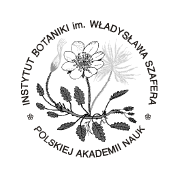 INSTYTUT CHEMII FIZYCZNEJ PAN
INSTYTUT CHEMII FIZYCZNEJ PAN
 INSTYTUT CHEMII ORGANICZNEJ PAN
INSTYTUT CHEMII ORGANICZNEJ PAN
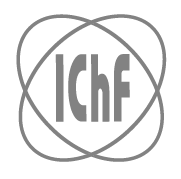 INSTYTUT FILOZOFII I SOCJOLOGII PAN
INSTYTUT FILOZOFII I SOCJOLOGII PAN
 INSTYTUT GEOGRAFII I PRZESTRZENNEGO ZAGOSPODAROWANIA PAN
INSTYTUT GEOGRAFII I PRZESTRZENNEGO ZAGOSPODAROWANIA PAN
 INSTYTUT HISTORII im. TADEUSZA MANTEUFFLA POLSKIEJ AKADEMII NAUK
INSTYTUT HISTORII im. TADEUSZA MANTEUFFLA POLSKIEJ AKADEMII NAUK
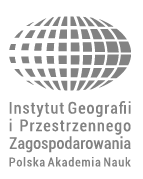 INSTYTUT JĘZYKA POLSKIEGO POLSKIEJ AKADEMII NAUK
INSTYTUT JĘZYKA POLSKIEGO POLSKIEJ AKADEMII NAUK
 INSTYTUT MATEMATYCZNY PAN
INSTYTUT MATEMATYCZNY PAN
 INSTYTUT MEDYCYNY DOŚWIADCZALNEJ I KLINICZNEJ IM.MIROSŁAWA MOSSAKOWSKIEGO POLSKIEJ AKADEMII NAUK
INSTYTUT MEDYCYNY DOŚWIADCZALNEJ I KLINICZNEJ IM.MIROSŁAWA MOSSAKOWSKIEGO POLSKIEJ AKADEMII NAUK
 INSTYTUT PODSTAWOWYCH PROBLEMÓW TECHNIKI PAN
INSTYTUT PODSTAWOWYCH PROBLEMÓW TECHNIKI PAN
 INSTYTUT SLAWISTYKI PAN
INSTYTUT SLAWISTYKI PAN
 SIEĆ BADAWCZA ŁUKASIEWICZ - INSTYTUT TECHNOLOGII MATERIAŁÓW ELEKTRONICZNYCH
SIEĆ BADAWCZA ŁUKASIEWICZ - INSTYTUT TECHNOLOGII MATERIAŁÓW ELEKTRONICZNYCH
 MUZEUM I INSTYTUT ZOOLOGII POLSKIEJ AKADEMII NAUK
MUZEUM I INSTYTUT ZOOLOGII POLSKIEJ AKADEMII NAUK
 INSTYTUT BADAŃ SYSTEMOWYCH PAN
INSTYTUT BADAŃ SYSTEMOWYCH PAN
 INSTYTUT BOTANIKI IM. WŁADYSŁAWA SZAFERA POLSKIEJ AKADEMII NAUK
INSTYTUT BOTANIKI IM. WŁADYSŁAWA SZAFERA POLSKIEJ AKADEMII NAUK












